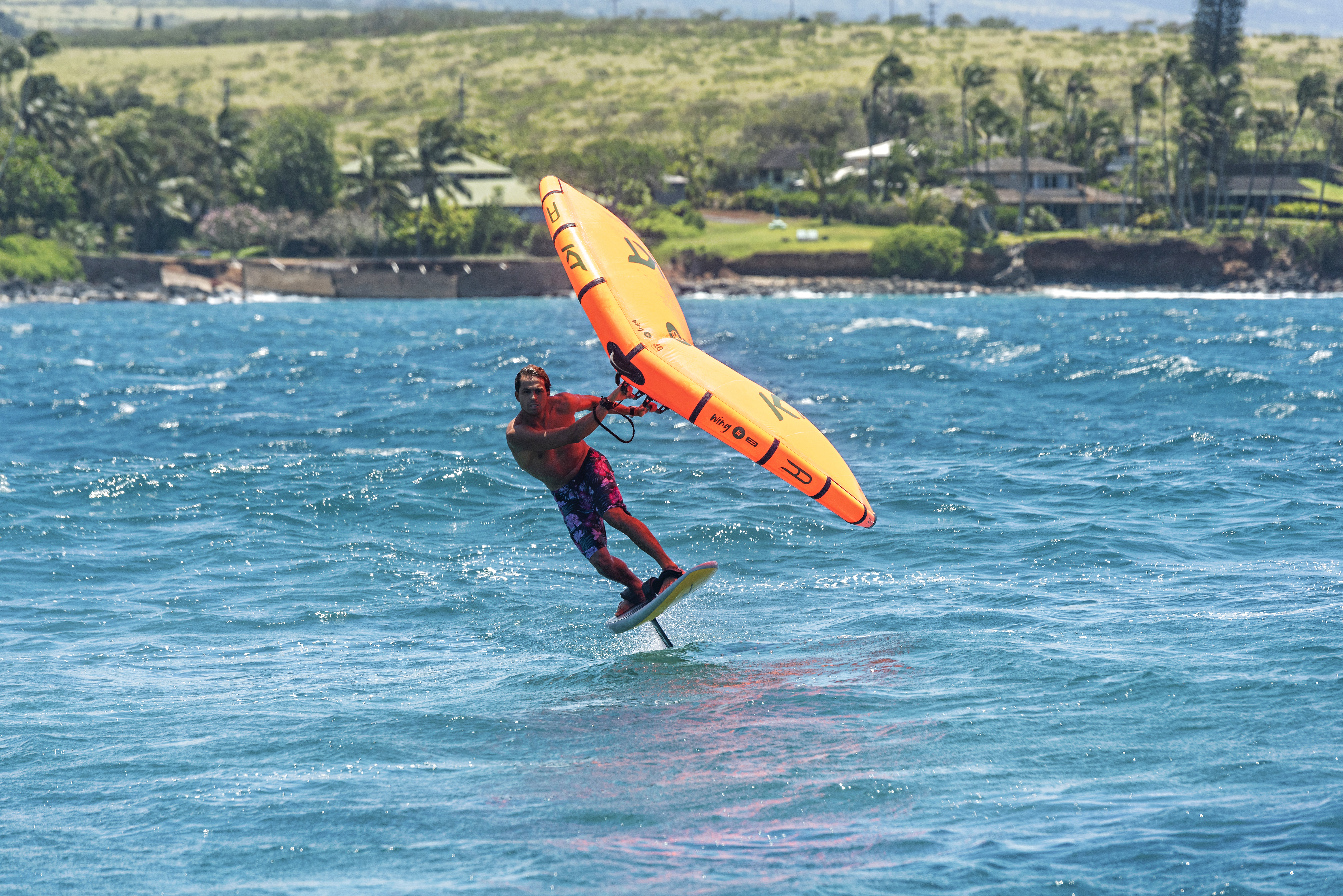2025 Wing Foil Board Size Guide
2025 Wing Foil Board Size Guide
When starting with wing foiling, it can be a daunting prospect figuring out the right gear to give you the best start in the sport while still allowing room for progression as you improve. There are, in essence, three main pieces of equipment that you require to get on the water:
This wing foil board size guide is designed to assist you on choosing the right gear for you. It’s important to remember that one size does not fit all. Equipment that may suit a 100kg beginner will be totally inappropriate for someone that is only 60kg.
How to Choose Your Wing Foil Setup
Board
As a beginner, board choice is critical to ensure that you don’t make the early stages too difficult for yourself. Much like SUP (Stand Up Paddle), having positive buoyancy is essential to ensure that you have a stable platform on which to learn.
- Buoyancy: The buoyancy of a board is given by the volume, which is measured in liters.
- As a general rule, one liter will offset the weight of one kilogram.
- As a beginner wing foiler, boards should have at least 30% more volume than your body weight in kilograms. For example: An 80kg rider should look for a board of 104+ liters (80 * 1.3 = 104). This ensures that the board will support your weight, and even if the wind drops out, you are able to remain on the board. If you are new to water sports, live in an area with very light wind or would just like the additional stability for added piece of mind, we suggest 40% over your body weight. Going any larger than what is suggested here can be be counter productive. Large boards are very difficult to move around in the water (especially for smaller people) and the have more windage, meaning that when they are up and flying, they’ll be more difficult to control.
- Progression: When progressing, people often find that they move onto smaller boards. This provides more maneuverability to the rider, allowing faster turning and pumping (developing power through the foil) of the board.
- Resale Value: There is a good second-hand market for larger beginner boards, which makes the resale value high, so upgrading is easy.
- Experience Factor: If you are experienced in related board sports such as windsurfing, kiting, or SUP boarding it is possible to reduce the surplus volume requirement down to +15% – 20%.
- For expert windsurfers and kiters, matching your weight to the board volume is possible, but be prepared for a challenge!
Foil
The hydrofoil is undoubtedly the piece of kit that has the most impact on your riding. Foil shapes, dimensions, and, to a lesser extent, material composition change the performance of the foil through:
- Speed
- Lift
- Maneuverability
- Stall speed
There are a few components that have to be considered:
- Front Wing:
- Larger wings are generally easier.
- They produce more lift at lower speeds and are more stable when riding.
- A common way to measure wings is using the area in cm².
- Entry-level riders will typically use hydro foil front wings between 1200-2000cm² (based on Modern Mid Aspect foils), depending on:
- Prevailing conditions (bigger wings for lighter winds)
- Rider weight (bigger wings for heavier riders)
- High-aspect wings:
- Longer and thinner, riding faster and better for pumping and gliding.
- Not as ideal for beginners but can still work well in some cases.
- Mast Size:
- Impacts learning; longer masts make the gear more ungainly to use and require deeper waters to ride.
- A longer mast allows you to ride through choppy waters without having to adjust ride height as much.
- Generally, beginners start out with a 60-70cm mast, with intermediates and advanced riders progressing to 80-95cm.
- Tail Wing:
- Acts as a stabilizer; larger wings provide more stability while slowing down speed and turning speed.
- Generally, a tail wing will match a front wing (large for larger front wings and vice versa).
- Fuselage Length:
- Comes in various lengths:
- Longer fuselages allow more stability at higher speeds.
- Shorter fuselages offer more maneuverability and better pumping.
- Most wing foilers use medium to short length fuselages.
- Comes in various lengths:
Hand Wing
The key feature to focus on in a hand wing is the size in m². Larger wings provide more power and are used in lighter winds or for heavier riders. The bigger you are, the more power you will need to get onto the foil. Wings offer a large usable wind range, but, as with other wind sports, most riders end up with a quiver of two or three hand wings to cater to varying wind conditions. The table below gives a rough guide on wind range per wing size based on an 80kg rider. Note that this will also vary with skill level, water conditions, and foil size.
| Hand Wing Size (m²) | Usable Wind Range (kts) |
|---|---|
| 2 | 20-37 |
| 3 | 18-32 |
| 4 | 16-29 |
| 5 | 14-25 |
| 6 | 8-18 |
| 7 | 6-15 |
Most riders will start with a 4, 5, or 6 m wing depending on the winds they expect to be riding.
Size Chart for Beginners
The following chart provides a basic guide for Wingfoil Board size relative to rider weight, incorporating the +30% volume rule:
| Weight (kg) | Wing Size (m²) | Board Size (L) | Foil Area (cm²) |
|---|---|---|---|
| 50 | 3.5 | 65+ | 1200 |
| 60 | 4.0 | 78+ | 1300 |
| 70 | 4.5 | 91+ | 1400 |
| 80 | 5.0 | 104+ | 1500 |
| 90 | 5.5 | 117+ | 1600 |
| 100 | 6.0 | 130+ | 1800 |
| 110 | 6.5 | 143+ | 2000 |
Note: Variations of ±0.5 m² for wing size, ±5% for board volume, and ±10% for foil area can be considered based on individual preferences and conditions.
Wing foil board size guide
Contact Us
Please drop us a line with your questions and queries.

